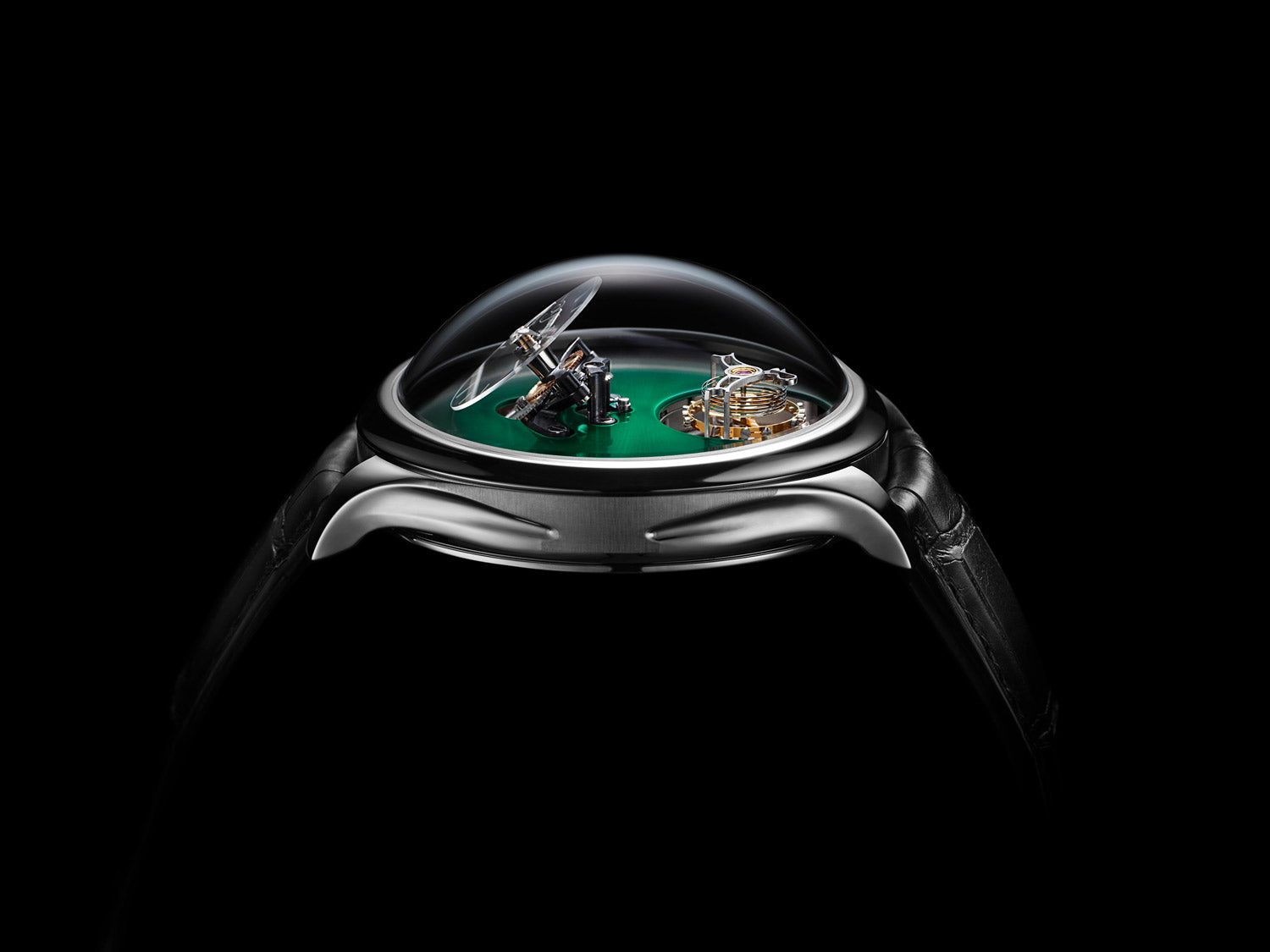
Audemars Piguet
Phoenix from the Ashes
There are very few brands in the world of watchmaking that can claim to have revolutionised the industry with a single watch like Audemars Piguet can say they did with the Royal Oak. While on the verge of financial ruin and falling into obsoleteness, the Royal Oak acted as the catalyst from which Audemars Piguet would rise like a phoenix from ashes. This is the story of how the Royal Oak saved Audemars Piguet all of those years ago and how it has evolved into the industry powerhouse that it is today.
There are very few brands in the world of watchmaking that can claim to have revolutionised the industry with a single watch like Audemars Piguet can say they did with the Royal Oak. While on the verge of financial ruin and falling into obsoleteness, the Royal Oak acted as the catalyst from which Audemars Piguet would rise like a phoenix from ashes. This is the story of how the Royal Oak saved Audemars Piguet all of those years ago and how it has evolved into the industry powerhouse that it is today.
Royal Oak History
Released in 1972 the Royal Oak came out in the midst of the Quartz Crisis when Swiss watchmaking was on its knees due to an influx of cheap Japanese quartz watches. With Audemars Piguet in a bad place, their executives realised that without a disruptive change, they would fall by the wayside. Their solution was to have esteemed watch designer Gerald Genta design a luxury steel sports watch for them in response to some feedback from the Italian market. As the story goes, as confirmed by Genta, Georges Golay, Audemars Piguet's managing director at the time, contacted Genta at 4 pm on the eve of the 1971 Basel Fair asking for an unprecedented steel watch for the Italian market.
Released in 1972 the Royal Oak came out in the midst of the Quartz Crisis when Swiss watchmaking was on its knees due to an influx of cheap Japanese quartz watches. With Audemars Piguet in a bad place, their executives realised that without a disruptive change, they would fall by the wayside. Their solution was to have esteemed watch designer Gerald Genta design a luxury steel sports watch for them in response to some feedback from the Italian market. As the story goes, as confirmed by Genta, Georges Golay, Audemars Piguet's managing director at the time, contacted Genta at 4 pm on the eve of the 1971 Basel Fair asking for an unprecedented steel watch for the Italian market.

By the following morning, Genta had created the Royal Oak, which he would later describe as the masterpiece of his career. Genta was inspired by the aesthetic of a divers helmet and as such gave the Royal Oak its signature octagonal bezel, integrated bracelet, exposed screws and visible waterproofing gasket – all very peculiar choices for a luxury watch at the time. Audemars' advertisements would later go on to make fun of the fact that the screws were exposed.

At 39mm the Royal Oak was a massive watch for the period, with watches typically maxing out at 37mm or so. This earned the Royal Oak the nickname 'Jumbo' amongst industry professionals and collectors. At 3300 Swiss Francs, the Royal Oak had a price tag equally as 'Jumbo' as its case. At eleven times the cost of a Rolex Submariner and more expensive than most gold Patek Philippe dress watches, the Royal Oak was undoubtedly aimed at the luxury market.
Initially, after its release in 1972, the Royal Oak wasn't received very well. This slowly changed, however, as collectors started to appreciate its unique design and impeccable finishing. This began to forge a new market space whereby demand for luxury sports watches like the Royal Oak started to be noticed by other manufacturers. The likes of Vacheron Constantin and Patek Philippe came out with the 222 and Nautilus, respectively, in response to the Royal Oak's growing market share. Today, it's hard to imagine the watch industry without its luxury steel sports segment. Numerous brands have become deeply invested in this market, and it's all thanks to Audemars' ingenuity and to create it and stick with it, even with its slow take-off.
The Royal Oak Today
There is no doubt that the Royal Oak has shaped Audemars Piguet into the company it is today. It is important to note that without the Royal Oak, Audemars Piguet would likely not even still exist, becoming a name on the long list of brands that succumbed to the Quartz Crisis. With this in mind, it is only fair that the Royal Oak acts as the vehicle through which Audemars can provide us with their complications, mechanical excellence and technical breakthroughs. Using the Royal Oak to display their dominance in the field of openworking, that they pioneered in the 1930s, and setting industry records with it, Audemars Piguet is effectively giving the Royal Oak its well-deserved time in the spotlight.
There is no doubt that the Royal Oak has shaped Audemars Piguet into the company it is today. It is important to note that without the Royal Oak, Audemars Piguet would likely not even still exist, becoming a name on the long list of brands that succumbed to the Quartz Crisis. With this in mind, it is only fair that the Royal Oak acts as the vehicle through which Audemars can provide us with their complications, mechanical excellence and technical breakthroughs. Using the Royal Oak to display their dominance in the field of openworking, that they pioneered in the 1930s, and setting industry records with it, Audemars Piguet is effectively giving the Royal Oak its well-deserved time in the spotlight.

Our watch stand from the DUO collection.
The Successors
From the Royal Oak, Audemars has gone on to provide us with two entirely separate product ranges, the Royal Oak Offshore, and the Royal Oak Concept. Released in 1993 and 2002, respectively, these two watches were the 20th and 30th-anniversary models of the Royal Oak that both aimed to create spin-off collections. The Royal Oak Offshore was a reimagined Royal Oak, designed for a younger and sportier clientele that wanted to push their watch to its limits and use it without having to worry about it. The Offshore would even go on to become just as successful as its predecessor, but at the cost of enraging the Royal Oak's designer, Gerald Genta – who felt his original design was completely destroyed due to the changes Emmanuel Gueit had made to it.
From the Royal Oak, Audemars has gone on to provide us with two entirely separate product ranges, the Royal Oak Offshore, and the Royal Oak Concept. Released in 1993 and 2002, respectively, these two watches were the 20th and 30th-anniversary models of the Royal Oak that both aimed to create spin-off collections. The Royal Oak Offshore was a reimagined Royal Oak, designed for a younger and sportier clientele that wanted to push their watch to its limits and use it without having to worry about it. The Offshore would even go on to become just as successful as its predecessor, but at the cost of enraging the Royal Oak's designer, Gerald Genta – who felt his original design was completely destroyed due to the changes Emmanuel Gueit had made to it.

See all our watch stands from the Classic collection.
The Royal Oak Concept would become Audemars Piguet's laboratory collection whereby they could showcase space-age technology and their latest innovations. By blending futuristic design with space-age technology and materials, the Royal Oak Concept acts as a way for Audemars to experiment in ways traditional watches just wouldn't allow them to. The Concept collection has granted Audemars the creative freedom necessary to push the envelope beyond what was originally possible for the humble wristwatch.

An Icon
The Royal Oak is an undisputed icon within the world of watchmaking. With it being the catalyst for an entire market segment that has given us watches like the Patek Philippe Nautilus, Vacheron Constantin 222/Overseas and so many more, it would wrong to ignore the impact it has had on the industry. Even the two new collections that it has spawned have gone on to become legendary in their own right, and that wouldn't have been possible without the Royal Oak's groundwork. With the Royal Oak's popularity growing with each passing day it seems that it still has plenty of gas left in the tank to continue defining the luxury steel sports watch market that it singlehandedly created.
The Royal Oak is an undisputed icon within the world of watchmaking. With it being the catalyst for an entire market segment that has given us watches like the Patek Philippe Nautilus, Vacheron Constantin 222/Overseas and so many more, it would wrong to ignore the impact it has had on the industry. Even the two new collections that it has spawned have gone on to become legendary in their own right, and that wouldn't have been possible without the Royal Oak's groundwork. With the Royal Oak's popularity growing with each passing day it seems that it still has plenty of gas left in the tank to continue defining the luxury steel sports watch market that it singlehandedly created.



Leave a comment
This site is protected by hCaptcha and the hCaptcha Privacy Policy and Terms of Service apply.